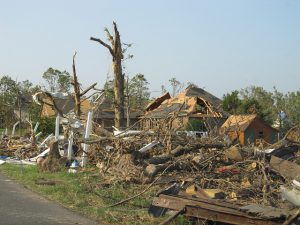Why should New Yorkers care about what’s going on in Maryland?
Because what affects Maryland also is affecting the state’s vast Adirondack Park.
It’s called acid rain.
Earlier this week, the Adirondack Council joined with the state of Maryland and a coalition of environmental and health organizations to file a notice of intent to sue the U.S. Environmental Protection Agency for its failure to require Midwest power plants to turn on already-installed pollution control equipment at power plants that burn coal.

Turning on the equipment is required under the Clean Air Act. Air pollution from the Midwest smokestacks harms the Adirondack Park and sensitive areas throughout the Northeast. Many Adirondack lakes — and the fish and plant life they support — have been devastated over the years by acid rain, created when the coal-burning plants spew sulfur dioxide and nitrogen oxides into the air. The toxins are carried east by prevailing winds and fall to earth as acid rain, virtually wiping out aquatic life in many lakes and ponds throughout the park.
Back in the 1980s and 90s, former Rep. Sherwood Boehlert, R-New Hartford, led efforts to pass landmark clean-air legislation to battle what he called “a cancer in the sky.” But acid rain is an insidious enemy, and even decades after clean-air legislation took effect, many lakes have been slow to recover.
Nature heals slowly. And in ensuing years, other legislators representing parts of the Adirondack Park — former Rep. John McHugh, R-Watertown, and former Rep. Michael Arcuri, D-Utica — worked to strengthen clean-air legislation to protect the park.
The EPA’s failure to enforce use
of the already-installed pollution control equipment at power plants that burn coal is a giant step backward. As the Adirondack Council rightly notes: Acid rain has killed high-elevation forests and destroyed wildlife habitat. It alters forest soils, releasing toxic metals from otherwise harmless compounds. These metals harm tree growth and destroy fish gills. Fish that survive accumulate mercury in their flesh, as does everything that eats fish, including people.
Smog, too, the Council notes, has been identified as a problem in parts of the Park. Air pollution generated in Pennsylvania, Ohio and Kentucky, for example, is carried by upper air currents across Adirondack mountaintops. Climbers and hikers who venture above 3,000 feet can find themselves breathing air that is far smoggier than the air at base camp. Maryland’s smog problems cannot be solved without cuts from upwind polluters.
The Council, in partnershjip with the Environmental Defense Fund (EDF), lead the effort to force the EPA to take action. It’s a mission that must be pursued. Acid rain has been a scourge for too many years, and while some progress has been made, we still have a way for go. Protecting the environment that includes our precious Adirondacks must not be compromised.